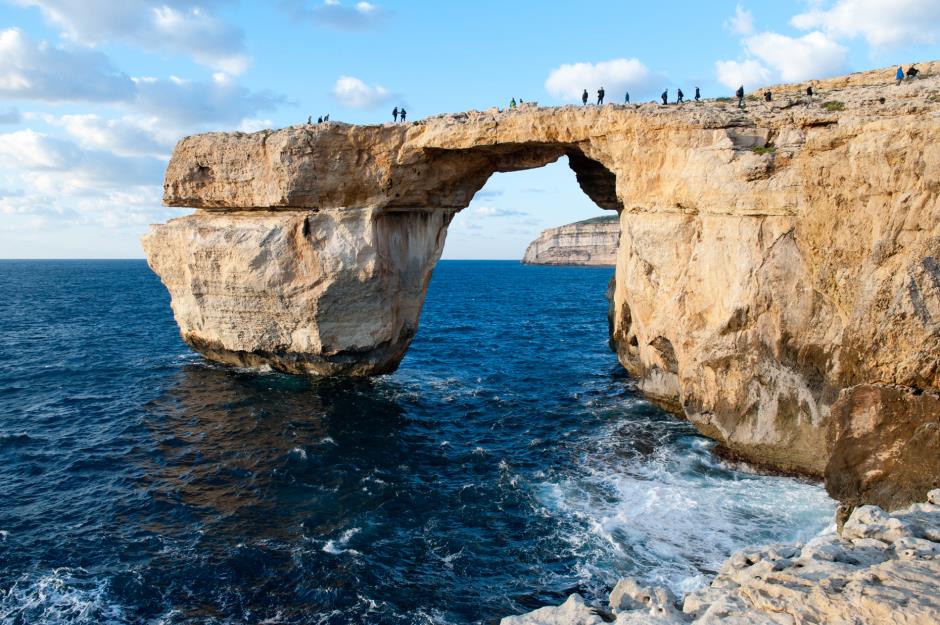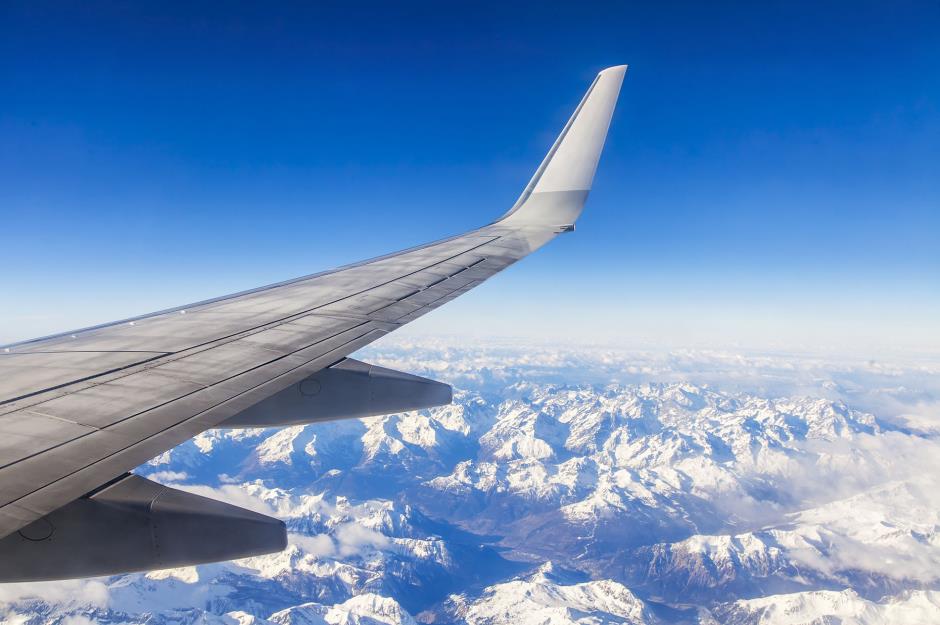How weather has changed the way we travel

CTatiana/Shutterstock
The changing face of our world
Storms, floods, drought, climate change – all of these have an effect on our natural wonders and often cause permanent destruction and change. Here are just a few examples of how the weather has changed the world and where we travel.

bellena/Shutterstock
There's more turbulence
Scientists claim that global warming has a direct impact on our comfort while flying. Due to temperature increases, the winds are changing – even higher up in the atmosphere where the average plane cruises at 35,000 feet – which can cause more turbulence. Transatlantic flights could be particularly prone to heavy turbulence, as the jet stream winds along the route between London and New York are getting up to 15% stronger in winter.
Longer and more expensive flights
The rising temperatures and stronger jet stream winds are not only causing more turbulence but also slowing planes down. Long-haul routes have seen a small increase in flight times, and just one minute extra per flight means that, collectively, planes spend approximately 300,000 hours longer per year burning roughly a billion additional gallons of jet fuel. In turn, this makes long-haul hops more expensive and only adds to the existing issue of CO2 emissions.
Alexander Penyushkin/Shutterstock
Diseases spread more
Castiglione di Cervia, a small village in northern Italy, was ground-zero for the first ever European outbreak of a tropical disease due to climate change, according to World Health Organisation (WHO). More than a hundred of the town's 2,000 inhabitants experienced high fever, rashes and crushing pains in bones and joints. This was caused by a soaring population of Asian Tiger mosquitoes, who, due to an unexpectedly mild winter, had started breeding early. When an Italian tourist returned home with chikungunya, a relative of dengue fever, the mosquitoes provided the perfect medium for the virus to spread. Similarly, the range, where mosquitoes can carry malaria, is widening. Even though malaria mosquitoes only live a couple of weeks, due to warmer temperatures, they are able to spread the tropical malady a lot further than normal.
Melting ski resorts
It used to be the highest ski run in the world, but the Chacaltaya glacier in Bolivia is now the merest shadow of its former icy self thanks to climate change. The 17,400-foot glacier high up in the Andes is thought to be at least 18,000 years old, but scientists discovered in the 1990s that it was disappearing at an astonishing rate.
Daniel Wiedemann/Shutterstock
Melting ski resorts
By 2009, the glacier had melted away – six years earlier than predicted by scientists. The lack of water from the glacier means that the people in this part of Bolivia’s highlands will have a dramatically reduced water supply.
Wilfredorrh/Flickr/CC BY-NC-ND 2.0
Melting ski resorts
During the 1960s, skiing in Venezuela was a fun, exotic thing to do. But by the time the 1980s arrived, the Pico Espejo glacier on Mount Humboldt was disappearing, consigning the idea of skiing to the past. When the cable car was built in 1960, there were nine glaciers in Venezuela, but now only two small sections remain.
SAKIS KALOUA/Shutterstock
Melting ski resorts
Come winter, ski resorts in the Alps should be teeming with thrillseekers. However, severe snow loss means some have struggled in recent years. Snow-less winters due to warmer temperatures mean a lot of the resorts now use fake snow, or simply offer their guests other activities, including spas, hiking and horseback riding.
Melting ski resorts
If the global temperature continues to increase at the current rate and snowfall doesn't pick up, the Alps could lose as much as 70% of snow by the end of the century. Worst case scenario predicts no snow below the 4,000 feet mark, which means resorts like Charmey in Switzerland and Ischgl in Austria may no longer be a skiers paradise.
Oliver Foerstner/Shutterstock
Disappearing islands
The hundreds of islands that make up the Solomon Islands are strung out between Papua New Guinea and Australia. Bit by bit, they’re starting to disappear because of climate change and rising sea levels. Five islands have been submerged completely, while another six are in danger. Whole coastlines have been eroding and forcing people to rebuild their villages on higher ground.
Evaporating lakes
Lake Powell was always controversial. The second-largest reservoir in the US was created in 1963 when the Glen Canyon dam was built – obliterating thousands of ancient ruins no one had realised were there until it was too late. But the Arizona lake became a popular recreational spot for swimming and boating. Now it’s becoming the victim of persistent drought and is running at less than half its capacity.
NASA Johnson/Flickr/CC BY-NC 2.0
Evaporating lakes
In December 2015, Bolivia’s second-largest lake was officially declared evaporated. Lake Poopó became another victim of climate change as it creates havoc on the glaciers and water systems of the Andes – not helped by the drought brought by El Niño. The shallow saline lake had dried up before, but it had managed to bounce back – until now.
Evaporating lakes
If you look at what the locals call the “bathtub ring”, you’ll see a line of calcium carbonate that’s moved 100ft upwards in the sandstone. But the diminishing water levels are also revealing hidden treasures including the so-called Cathedral in the Desert grotto.
NASA Johnson/Flickr/CC BY-NC 2.0
Evaporating lakes
Lake Faguibine used to be Mali’s bread basket and one of its most fertile areas. But as the Sahara desert advanced southwards and rainfall became rare, sand dunes began filling up the channels that brought water from the Niger River. Since the 1970s, this vast lake 50 miles west of Timbuktu has been dry. There have been plans to revive the lake, but this time war has been getting in the way.
Coastal erosion
It was the symbol of Malta – specifically its little sister island Gozo. The magnificent limestone arch known as the Azure Window had been a favourite among visitors and locals alike, created by erosion at the hands of the ocean. But in March 2017, heavy storms caused the arch to collapse, leaving a terrible gap.
Coastal erosion
Geologists were aware of the erosion caused by sea swells, but they had thought the arch would last for decades. The Maltese president wasn’t alone when he described the collapse as heartbreaking.
Oleg Znamenskiy/Shutterstock
Flourishing deserts
This series of salt and clay pans in the Namib-Naukluft National Park is one of Namibia’s biggest draws. Sossusvlei translates as “dead-end marsh”, and its vast dry expanse is certainly stark. But the weather has a role in creating something quite special.
Hannes Thirion/Shutterstock
Flourishing deserts
Rain is rare in this part of Africa, but occasionally the region will be hit with such an usually heavy downpour that a lake comes into being – turning it into a magnet for thirsty local wildlife.
Nick Normal/Flickr/CC BY-NC-ND 2.0
Destruction and regeneration
New Orleans was dealt a devastating blow when Hurricane Katrina swept through the Louisiana city in 2005. Eventually, though, parts were rebuilt and revitalised, and the city went through an economic boom. Before Katrina, St Roch Market had been a down-at-heel food market. Ten years later, it reopened as a hip food court in a light-filled, restored space.
Infrogmation of New Orleans/Flickr/CC BY 2.0
Destruction and regeneration
Some locals complained of the gentrification that took over some neighbourhoods, including St Roch. For some people, the boom passed them by.
Dying seas
Currently shrinking at a rate of about 3.3 feet per year, sinkholes have appeared all over the Dead Sea where the water has evaporated, caused by high temperatures and drought. If it continues to dry out at the current rate, experts estimate that it could be completely dry by 2050.
Peter Adams Photography L/Shutterstock
Dying seas
Located off the northeast coast of Australia, the Great Barrier Reef is the largest coral system in the world. Spanning more than 1,400 miles, it's divers' paradise with a rich marine life and rainbow-coloured corals. However, the rising sea temperatures (a result of climate change) have caused severe coral bleaching in this area. The condition that turns the coral white and causes mass coral deaths has affected more than 90% of the reef at some degree.
Dying seas
In the most severely affected area, Port Douglas, an estimated 70% of shallow water corals have died and several experts doubt the reef can be saved.
Destruction of forests
For more than a thousand years, the enormous Pioneer Cabin Tree has graced the Calaveras Big Trees State Park in California. But in January 2017, the worst storms for a decade felled this giant sequoia nicknamed the tunnel tree – so called because a huge hole had been carved into its massive trunk to let people and cars through.
Tom Purcell/Flickr/CC BY-NC 2.0
Destruction of forests
The tree’s 33-foot trunk had been partially eaten away by lightning strikes and forest fires in the 19th century, and eventually was carved through in 1880. Some people think the hole might have hastened the tree’s demise.
Destruction of forests
The Earth's biggest rainforest, the Amazon is home to one in ten species in the world. Increased temperatures and changing rain patterns have made it a fragile habitat for the largest collection of animals and plants in the world. Extreme droughts have also left vast areas of many tree species subject to large-scale dieback and forest fires. This has led to the extinction of 26 animal and plant species and put a further 644 species at severe risk.
Destruction of forests
Home to the largest mangrove forest in the world and a refuge for a number of endangered species, like tigers, the water and soil in the Sundarbans National Park in India and Bengal is becoming increasingly salinated – a result of rising temperatures. The salinity is the driving force behind the striking loss of mangroves, coastal erosion and flooding, as well as loss of fresh water species.
Regular flooding hotspots
Duval Street has always been considered the tourist centre of Key West, Florida. The pastel-coloured shops, restaurants and cafés have always been subject to flooding due to its low elevation, however, the increase in rainfall has contributed to the street being submerged more often than usual. What's more, the street gets flooded during high tide too, as the rising sea level in the Florida Keys has caused water to make its way up the street drains. It is estimated that the sea level will rise another 15 inches in the next 30 years, putting the street at a severe risk of submersion.
Dangerous habitats
The Alaskan wilderness has always been appealing to adventure-seeking travellers. From kayaking to hiking, the natural wonders are in abundance here. However, the weather is slowly playing a part in making exploration a little trickier. Increasingly dry weather has led to droughts throughout the region, in turn causing forest fires that destroy habitats for some of the animals that make coming to Alaska so exciting, including brown and black bears.
Jennifer Vella/Shutterstock
Dangerous habitats
Warmer weather also means the glaciers melt and retreat, which can cause landslides, sometime so intense they register on the Richter scale. This not only destroys the natural environment, but it makes travelling here more dangerous. Currently, Alaskan glaciers lose about 75 billion tons of ice annually – enough to fill the Wembley Stadium 75,000 times.

